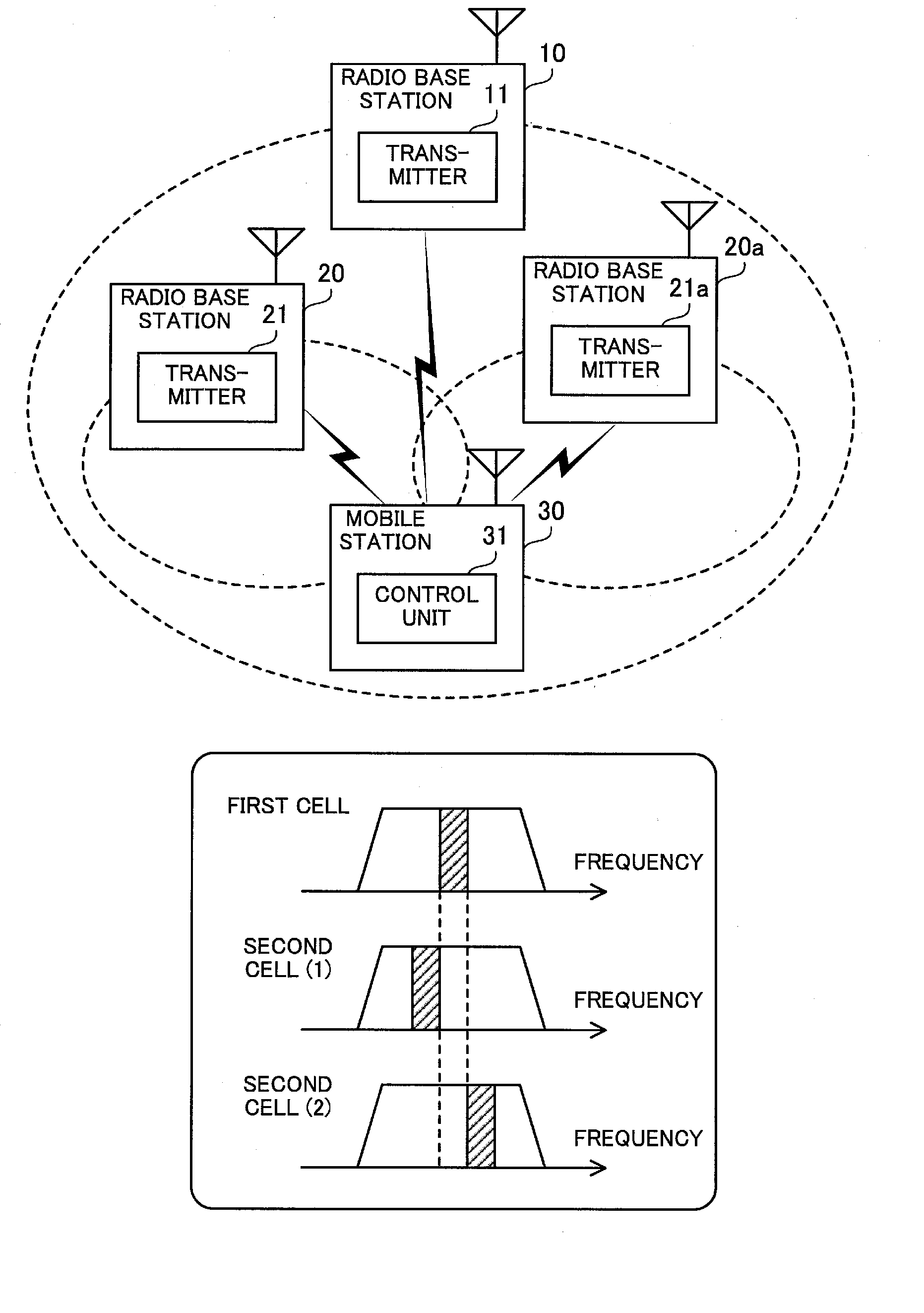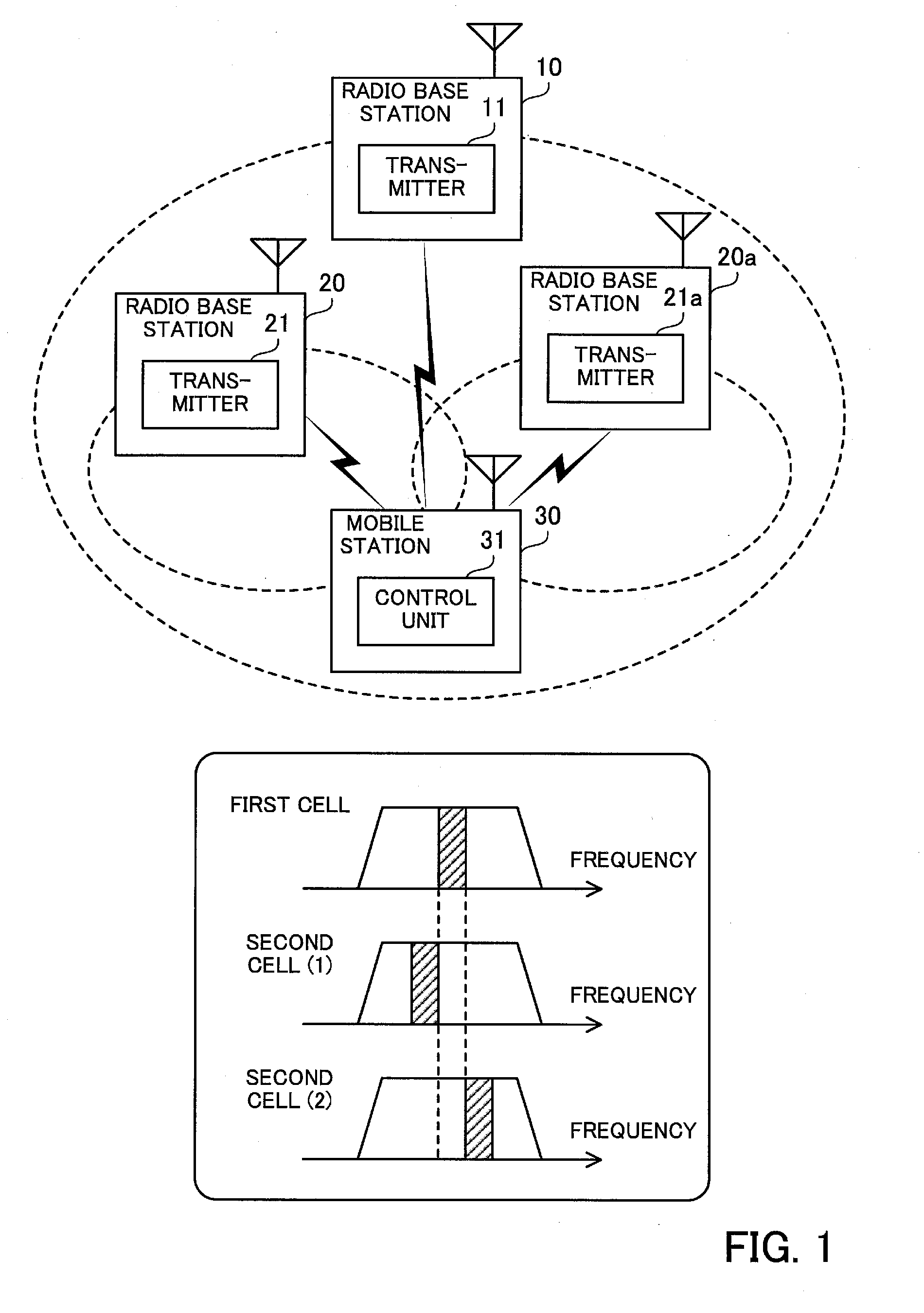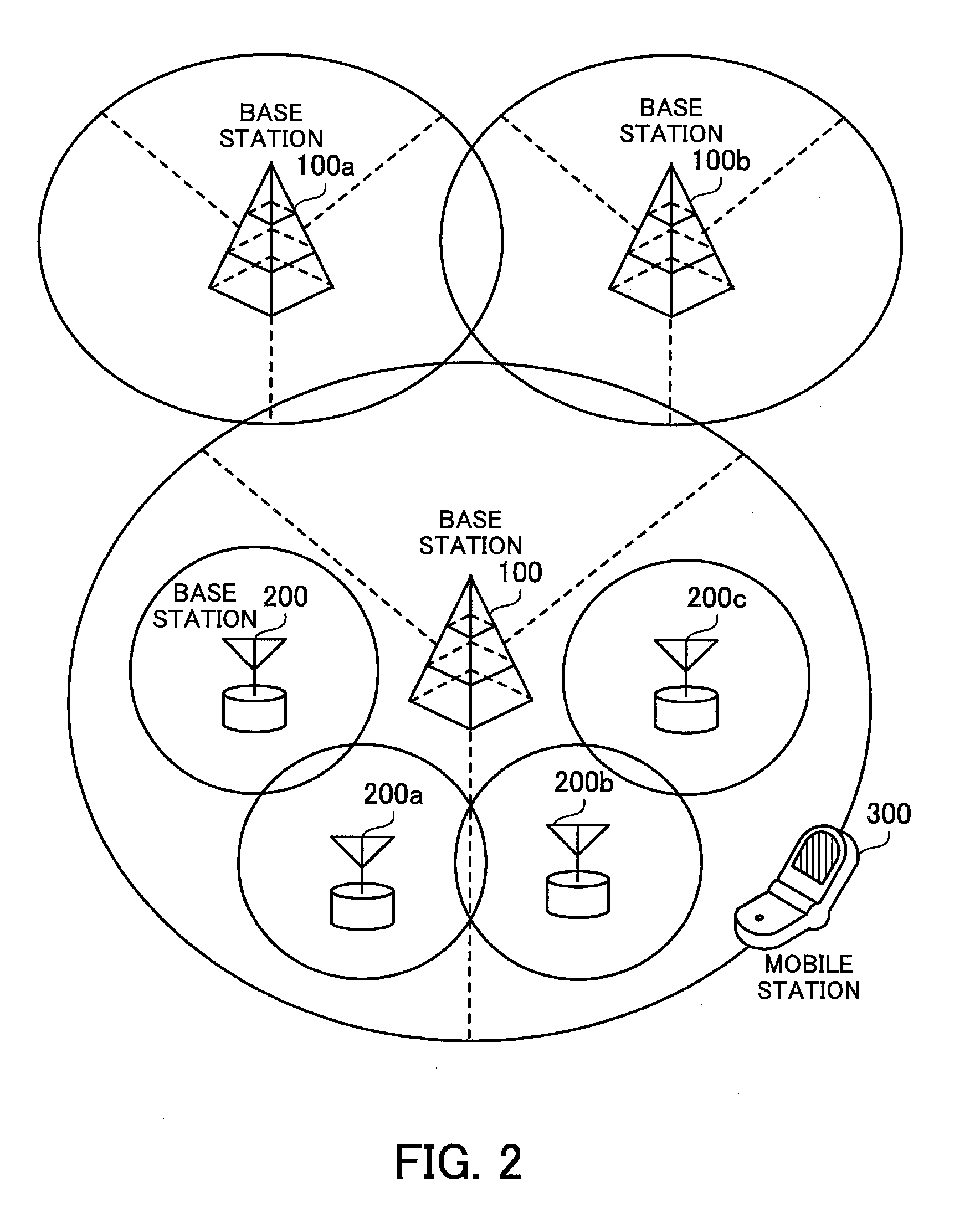Transmission method, radio base station and mobile station
a technology of radio base station and transmission method, applied in the direction of network topologies, synchronisation arrangements, wireless commuication services, etc., can solve the problems of requiring a considerable time and taking a long time to determine the desired cell
- Summary
- Abstract
- Description
- Claims
- Application Information
AI Technical Summary
Benefits of technology
Problems solved by technology
Method used
Image
Examples
Embodiment Construction
)
[0027]Hereinafter, an embodiment of the present invention will be described in detail with reference to the accompanying drawings. The description begins with an overview of an embodiment to be discussed herein and then proceeds to the details of those embodiments.
[0028]FIG. 1 illustrates an overview of an embodiment. In a radio communication system of FIG. 1, a plurality of cells are provided in a service area, and a mobile station selects a cell from among this plurality of cells to access in order to perform radio communication. This communication system includes radio base stations 10, 20, and 20a, and a mobile station 30.
[0029]The radio base station 10 is a radio base station that serves a first cell with a large radius. That is, the first cell is a radio coverage area of the radio base station 10. The first cell is equivalent to a macrocell with a radius of 1 to several km. The radio base station 10 is capable of performing radio communication with mobile stations existing in...
PUM
 Login to View More
Login to View More Abstract
Description
Claims
Application Information
 Login to View More
Login to View More - R&D
- Intellectual Property
- Life Sciences
- Materials
- Tech Scout
- Unparalleled Data Quality
- Higher Quality Content
- 60% Fewer Hallucinations
Browse by: Latest US Patents, China's latest patents, Technical Efficacy Thesaurus, Application Domain, Technology Topic, Popular Technical Reports.
© 2025 PatSnap. All rights reserved.Legal|Privacy policy|Modern Slavery Act Transparency Statement|Sitemap|About US| Contact US: help@patsnap.com



